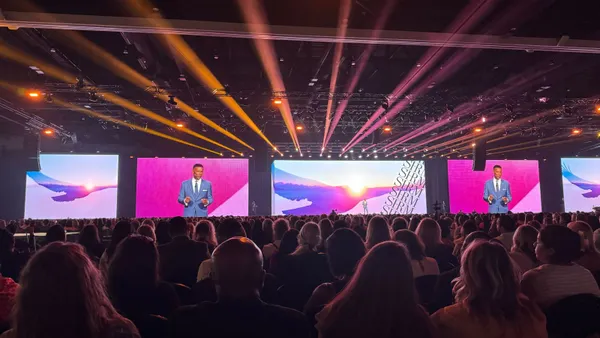As companies look to innovate and adapt in the constantly evolving climate of today’s business world, they’re embracing new technology to gain advantage over their competitors. And while investments in tech can be incredibly impactful, this only happens with effective adoption of the technology. To maximize that impact, personalization and the workforce experience have to be top of mind for leaders as they make technology decisions – especially when it comes to HCM.
Unlocking performance through personalization
Creating a personalized and authentic work experience is key to an engaged, loyal, and productive workforce. The relationships employees have with their managers, the direction of their careers, and how they fit into their organization all play an integral role in the overall health of an organization, and HCM solutions should support and enable these relationships. Providing people-centric technology that’s designed to respond to changing employee needs can help shape and define employees’ alignment to their colleagues, their leaders, and their work.
So how can we tap into personalization, facilitate connection in the workplace, and improve the work experience with technology? More to the point, where does the process begin? Delivering personalized experiences at work starts when leaders have a pulse on their organization's needs, challenges, and culture.
Start with listening
In order to create personalized experiences, leaders need to first understand their people’s needs. The first step? Listen to employees and give them multiple opportunities to have their voices heard. Prioritize listening with tools like pulse surveys, inclusion and wellbeing surveys, one-on-ones, town hall meetings, and focus groups – give workers a platform to speak and voice their opinion. Create time and space for organic, authentic conversations that go beyond work-related tasks; connection and compassion go a long way in building trust with employees.
Take action
Next, work to understand insights and act: walk through findings and closely evaluate what’s going on in the organization, down to each individual. Develop a plan to put feedback and ideas into action in an agile, measurable way. Results from team leader/team member one-on-ones can lead to more meaningful coaching to individual needs and challenges; org-wide survey results can indicate lagging engagement scores or concerns around DEI.
Focus on experimenting, learning, and growing – the needs and expectations of an organization are continuously changing, and the processes and solutions to meet them should be, too.
Tailored tools and technology
Finally, leverage HCM technology that helps support individuals by keeping them connected to the organization. Understanding employee needs allows organizations to deliver smart and personalized work experiences by providing relevant, actionable solutions for them.
However, generic, one-size-fits-all HCM solutions can fall short in supporting organizations and their unique teams, and often can’t provide the tailored experiences needed to keep employees engaged and productive. Outdated or irrelevant technology that isn’t designed to be people-centric can make employees feel unheard, undervalued, and disconnected.
Adaptable HCM technology centered around the workforce experience enables employees to work the way they want and need to. By making work simpler, more intuitive, and more personal, it becomes more meaningful and engaging, too.
Innovative HR leaders should be looking to HCM solutions that provide consumer-grade experiences that target the needs of different functions, locations, and teams across the organization.
Features and capabilities that streamline and simplify usability like conversational chat bots can help reduce time completing tasks and aid in adoption and system utilization. Machine learning and AI can provide insights and suggestions to make work more personal, predicting employee needs and making day-to-day tasks simpler and more streamlined. Team leaders can use workforce analytics to spot trends, skills gaps, and better understand demographics to make informed, intelligent decisions backed by data. Providing technology that puts people first not only creates smoother, simpler experiences at work, but signals that the organization puts their people first, too.
Enhancing the workforce experience
To truly unleash the power of new technology, organizations must first champion their most important investment—their people. This happens when companies take the time to listen and understand their people’s needs. When leaders invest in tools and technology that deliver insights that improve the workplace experience, true innovation begins.
Learn more about how to create personalized workforce experiences for your teams at FlowOfWork.adp.com.










